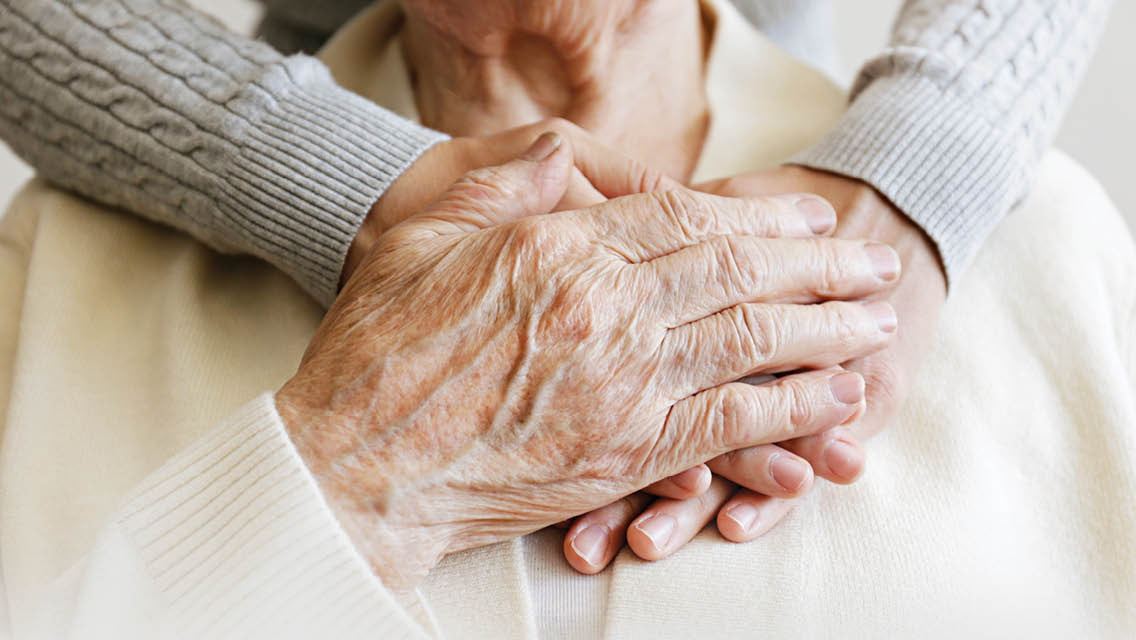When my mother-in-law, the saintly Shirley, suffered a major stroke in her mid-80s that left her paralyzed on her right side and struggling to form words, her family feared the worst. A few days in the hospital stabilized her condition slightly, but she wasn’t able to eat.
At a certain point, her doctor gathered us together and recommended that we arrange hospice care for her at a nearby facility. She wasn’t going to last very long, he predicted.
My Lovely Wife and I followed the ambulance to the facility the next day and helped her settle in. The staff were welcoming, engaged, and compassionate; the surroundings were quiet and comfortable. Freed from the harsh lights and frenetic energy of the hospital, Shirley seemed at ease. And when the nurse happened to mention there was ice cream in the kitchen, she perked up.
“Would you like some ice cream?” MLW inquired.
Her mom nodded, displaying the closest thing to a smile we’d seen since the stroke.
The treat soon arrived, and I spent the next several minutes spooning the sweet sustenance into her grateful mouth. It was a bit of a breakthrough. Gradually over the next few days, her appetite returned, and she regained some strength; before the week was out, it became increasingly clear that she was nowhere close to death.
I was thinking of Shirley the other day after reading about a Medicare pilot program that allowed terminally ill patients suffering from any of four specific diseases (cancer, chronic obstructive pulmonary disease, congestive heart failure, or HIV/AIDS) to receive hospice-style care at home without requiring that they give up on living. Under ordinary circumstances, Michael Ollove writes on Stateline, Medicare beneficiaries don’t qualify for hospice services unless they’re diagnosed with cancer and prepared to forgo all curative procedures.
And the results of the five-year program involving 4,574 patients were so revelatory, according to a report issued in April, that leaders in the palliative- and hospice-care movement are now pushing the Centers for Medicare and Medicaid Services (CMS) to make the changes permanent. CMS should allow all beneficiaries to access hospice-style care at home while also receiving treatment for their illnesses, they argue. And the services should not be limited to patients with six months or less to live.
“When you give people more choice and greater freedom to make choices in their best interests, they make decisions that are [not only] better for them in terms of quality of care but better for the country in terms of costs,” says Edo Banach, JD, president of the National Hospital and Palliative Care Organization. “The demo worked.”
Among the findings of the April report:
- Participants in the pilot visited the hospital less frequently during the five-year program than a control group: There were 26 percent fewer admissions for inpatient treatment and 14 percent fewer outpatient visits.
- During the last 30 days of life, pilot subjects were less likely than their counterparts to receive aggressive treatment.
- The costs to Medicare were 17 percent lower for program participants than for nonpilot seniors.
It was a game-changer for Gloria Foster, 73, who tells Ollove she wasn’t ready to give up on treatments for her diabetes and congestive heart failure — even after doctors gave her less than six months to live. “Hospice is more or less when you’re ready to die,” she says. “I just wanted to work my way back to doing as much as I could.”
The program provided Foster with around-the-clock access to a team of doctors, nurses, counselors, social workers, and chaplains that coordinated her in-home care, helped her manage her symptoms, and allowed her to look forward to a healthier future. By the time the pilot ended in December 2019, she’d outlived her prognosis, improved her mobility, and mostly stayed out of the hospital. “When it came to an end, I was very upset,” she recalls. “I cried, as a matter of fact.”
In the months since the program ended, Ollove reports, Foster has been hospitalized six times.
My mother-in-law also outlived her terminal prognosis, but she fared better than Foster after leaving hospice. Though Shirley struggled through some mostly futile physical therapy, there were no more hospital visits. She learned to get around in a wheelchair during the months she spent in the nursing home, cultivated some new friendships, and when the time came for her to leave us, she was ready to go.





This Post Has 0 Comments